Best mods for the VAG 2.0 TDi BKD
"Tuning the BKD 2.0 TDi:- a comprehensive upgrading guide."
This article is based on my experience with my Audi A3 which had the 2.0 TDi BKD engine. I will look at tuning mods and upgrades for this engine. It found it's way into many other cars and is one of the most popular diesel engines out there.
There are many 2.0 TDI tuning modifications around, but I found a catch or problem with many of them, so I'll highlight these potential pitfalls as we go through the options.
The VAG group 2.0 BKD diesel engines are very popular and have been revised and updated several times over the years. We will attempt to categorize the engines, differences and tuning upgrades, engine codes, defects, and concerns with them in our more general 2.0 TDI article.
If you're looking for a concise beginner's introduction to tuning diesel engines, check out our new video tuning guide We will be uploading a more detailed video for the 2.0TDi in the future, so please subscribe to our channel to ensure you don't miss it!
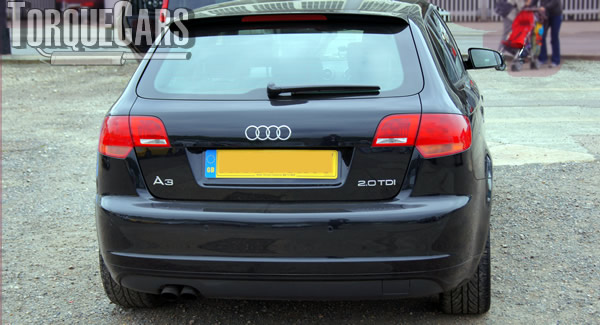
Engine specifications for the EA188 PD 2.0 TDI (140 horsepower) (R4 Tdi)
Pre-2008 engines are based on the PD EA 188 (Pumpe Düse) and are designated with the BKD
These are also related closely to the BKP (most often found in the Passat) or BMM, BMN, BMR, and BRD engine codes. Even after a remap, my BKD proved to be fairly trustworthy.
- Bosch ECU BKD 140 horsepower without DPF filter
The 140hp BKD can be easily mapped to roughly 170/180 and, in my view, are superior to a standard 170hp in terms of low end pull, but the 170s allow for more power improvements and hence provide a better starting point they also avoid the annoying DPF filter issues.
Modifications to the 2.0 TDI BKD
There are some significant distinctions between the 140 and 170 engines. The primary differences are the turbocharger and injectors.
Indeed, a 140 engine can be tuned/remapped to produce 170bhp (in our view, this is a better option than purchasing a 170!) nonetheless, the turbocharger on the 140 has a maximum output of 170-180.
If you maintained the regular 140 injectors but installed a higher capacity turbo, you should be able to get roughly 200-220bhp before increasing the injectors.
Although the 110 engines are often equipped with tiny turbos, low-pressure injectors, and a low-quality fuel pump, the components installed vary significantly by model year and manufacturer, so verify them carefully before planning your modification.
The Best Engine Modifications for a 2.0 TDi BKD
- Turbo upgrade (hybrids or large turbo)
- Intercoolers
- Differentials
- Upgrades to your fuel system - based on your power increases
- Consider engine tuning/remapping a 2.0TDi.
Please avoid the EGR delete mods, and the single mass flywheels are also problems on these engines.
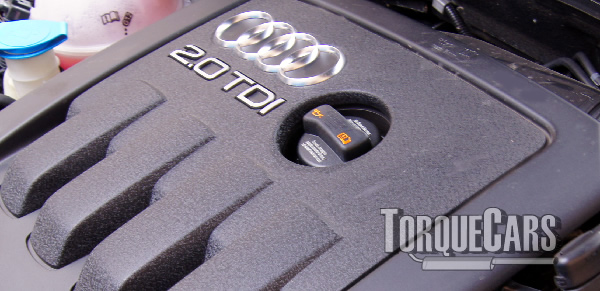
Remapping the BKD
A tune/remap adjusts the engine's computer settings in order to enhance its power. In its most basic form, it increases the engine's "safety" limitations, pushes more fuel/air into the engine, and alters the turbo spool up rates to optimise power gains.
Numerous tuners will boost the fuel rail pressure and injector timing in order to enhance mid-range power and acceleration while maintaining the original peak pressure limits. If not done properly you will get a lot of smoke!
They vary the injection timing, which is crucial in diesel engines, when it comes to fuelling. All common rail systems include two injection phases: a pilot phase that initiates the fire and a primary phase that supplies the majority of the power. The pilot phase reduces the unmistakable rattling and banging of the DI diesel.
While these earlier PD engines respond well to remapping, the CR engines offer significantly more control and typically produce more mid- to top-end power.
Engine tunes or remaps for the BKD 2.0 TDI engines:
The 140 can be increased to 170 with a software update alone, but anything beyond that would need an examination of the turbo. Due to the smaller turbo, a tuned/remapped 140 is less sluggish and more agile than a 170, however turbos may fail if not properly serviced and maintained when pushed this hard.
It's obvious that headline power ratings are just half the storey; you need also consider the engine's overall feel and torque range.
One map I used on mine introduced so much wheelspin below 1700rpm it made the car hard to drive, so I settled on a more flat torque band that gave a nice pickup, and boosted power through the rev range and let me explore the upper ends of the RPM band more fully.
With a tune/remap and turbo upgrade, the 140 bhp BKD engines may easily reach 225-260 horsepower. Again, exceeding this limit will need a pretty serious turbo upgrade or hybrid turbo. Bear in mind that bigger turbos are often laggier, resulting in less low-end torque. If you specify the appropriate turbo upgrade, this should not be a problem.
BEWARE: Pushing a stock turbo beyond 180hp will shorten it's life dramatically. These turbos will start to siren, whine and smoke and will eventually just give up on you.
Diesel engines received significant R&D money in the early part of the twenty-first century (say, the first five to six years), whereas petrol engines made little progress.
Diesel engines have gone a long way since their inception; they are now cleaner than gasoline engines, provide more power, and yet achieve superior fuel efficiency.
Ignore claims about peak power from engine tuning/remapping businesses
When comparing maps, please disregard peak power, since tuners are known to fabricate a power blip or spike to attract attention.
Rather than that, concentrate on the overall torque curve. More power at the bottom overpowers the turbo and creates traction issues, while increased power at the top overpowers the turbo and its components.
Consider the dyno graph below and decide which map is the best fit for you.
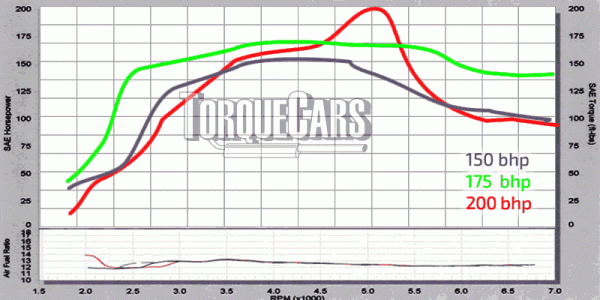
The red plot represents an increase in power, with a headline number of 200hp, but a decrease in power across the RPM range, while the green trace demonstrates a steady rise in power throughout the RPM range.
Additionally, it indicates peak power at 4000rpm, which is excellent for an engine that redlines at 7000rpm, ensuring that extra power is distributed fairly where it is needed most.
On a graph, we want to show a nice smooth torque climb with few dips and troughs over the rpm range. Without dyno reports, you have to wonder whether the map has ever been tested or examined.
The TDi tuning box works quite well on these engines and is a simple plug in and go setup which can be done in a very short time. IMO these work best on Diesels and are a good compromise between a custom map which can upset your dealer, or something you can add and remove at a moments notice.
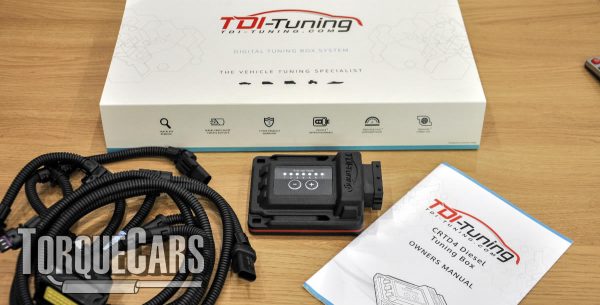
Upgrades to 2.0 TDi BKD turbochargers
To push a 140 horsepower beyond 170 bhp, TorqueCars suggests the GTB2056VK is far less laggy than the GTB2260VK because to its smaller compressors, but it can still flow to roughly 260-275 bhp.
The following turbocharger upgrades are available in kit form for the BKD engines, but do your research as some are intended to give higher top end power figures, and suffer from lag, and others give a good low to mid range boost.
- GTB2260VK
- GTB2056VK
- GTB1756VK
- GTD2872VRK
If you're aiming for the 200bhp level, used turbos from the 170bhp engine are a nice, affordable, and feasible upgrade choice.
The alternative is to go with a hybrid turbo. A hybrid turbo is a direct replacement for the OEM turbo, but with the internals tuned to your specific power requirements.
By altering the shape of the exhaust side impeller, you may make the turbo spool up faster, resulting in a wider power band or more top end power.
It is often a compromise, since you will not be able to get all of these benefits and will need to choose the best answer for your circumstances.
Additionally, changes to the intake compressor's profile may have a significant effect on the amount of air that can be forced into the engine.
Serious turbocharger upgrades on the 2.0 TDi BKD
Large turbos often exhibit significant low-end lag. Small turbos are quicker to start, but they cannot produce as much power at high RPMs.
Fortunately, the turbo range is always expanding, and we often see variable vane turbos, in which the vane shape is altered in response to speed in order to eliminate lag and enhance top end performance.
Twin scroll turbos divide the exhaust gases into two channels and route them to the turbocharger's differentially tilted vanes. Additionally, they enhance the engine's scavenging ability.
Tuning a 2.0TDi BKD Using Quarter Mile Run times to compare
We're assuming a kerb weight of 1400kgs with a manual gearbox.
We are assuming a 1400kgs kerb weight, & Manual transmission
| Base power | Quarter Mile |
Tuned to |
Kerb Weight |
Quarter Mile |
| 109hp | 18.59 | 140hp | 1400kg | 17.51 |
| 140hp | 17.15 | 175hp | 1400kg | 15.96 |
| 150hp | 16.77 | 225hp | 1400kg | 14.71 |
| 170hp | 16.10 | 255hp | 1400kg | 14.13 |
| 640hp | 1400kg | 10.98 |
With new maps, turbos, fueling modifications, and forged internals, impressive gains may be obtained on the 2.0TDi tuning project. Bear in mind that FWD vehicles would have traction troubles at 225hp, thus the 4 wheel drive models will efficiently disperse the power.
Quarter mile speeds of less than ten seconds are achievable but impractical for the 2.0 TDi, which requires around 640hp to move a 1400kg vehicle down the drag strip in less than eleven seconds.
Camshaft upgrades and modifications for the 2.0TDi
Adjusting the cam timing is relatively simple on the majority of these engines, since the cams are equipped with vernier pulleys. Slightly advancing or retarding the camshaft will modify the car's peak power zone.
Only experiment with this if you are confident in your abilities. If you adjust it too much, the vehicle may fail to start when cold, so back off somewhat from the desired position.
The top of the cam cover simply unclips, revealing the cam pulleys. ALWAYS CAREFULLY MARK THE ORIGINAL POSITION SO YOU CAN RESTORE IT IF YOU ARE NOT SATISFIED WITH THE RESULTS.
By advancing or retarding the camshaft, you may adjust the power band within the 2.0 TDi RPM range to fit your chosen driving style.
Because Bosch ECUs are quite protective of the engine, errors in cam timing choices seldom have major effects.
There are several nice camshaft improvements available today; the major purpose to fit them is to shift the power band to where you want it; for example, with a remap, you may want less bottom end to compensate for more top end power.
The extended valve durations may result in an increase in horsepower over the majority of the rpm range.
As an alternative to a fast road cam, you could just use the vernier pulley to modify the cam & valve timing, which would shift the power band up or down, but TorqueCars recommends making only very modest tweaks to the cam locations.
MAF (Mass Airflow Sensor)
It is common for the 2.0 TDi's air flow sensor (MAF) to become restricted when significant amounts of air are drawn into the engine, as is the case with big power increases.
In compared to the OEM air sensor, which depleted performance at a much lower level, we see significant power increases with 4 bar air sensors.
Upgrades to the 2.0 TDi's fuel system
When torque is increased, it is necessary to pay attention to the fuel system.
Additional power from your engine requires more diesel, which must be mixed to a particular degree with the airflow. It is critical to over-define your injector flow rate and leave some extra capacity.
When buying an injector, it is advisable to add an additional 20% to account for injector deterioration and to provide some additional capacity in case the engine requires more fuel.
Upgrades to the 2.0 TDI's exhaust system
You should change your exhaust system only if the existing exhaust is causing a limitation in the flow. The stock exhaust system installed on all VAG group 2.0TDi vehicles is more than enough!
As a result, there is no need to change the exhaust, and the sound produced by an enhanced TDi is unappealing (in my opinion).
On the majority of factory exhausts, the flow rate remains adequate even with moderate power increases; however, once you begin pushing the power levels, you will need to purchase a stronger flowing exhaust.
However, if your exhaust pipe is excessively large, with a diameter more than 2.5 inches, you will lose a significant portion of the flow rate, resulting in a loss of power and torque.
The standard exhaust restrictions may be related to the filters used (cats and dpfs), thus adding a more free-flowing sports alternative might help avoid this restriction. In most countries, it is illegal to entirely remove them from your automobile, and in certain areas, it is unlawful to modify them for a sporty alternative.
Upgrades to the 2.0TDi differential
Not really an engine change, but after power reaches approximately 190hp, traction and handling concerns become apparent, and TorqueCars recommends upgrading the differential at this time.
Thus, the optimal design is to distribute power in such a way that no wheel receives more than 75% of the available power at any one time. This is where torque-detecting differentials come into play.
Clever diff installations include the semi-locking diff, which locks only when a wheel spins, sending power to both wheels and providing much improved grip in wet corners.
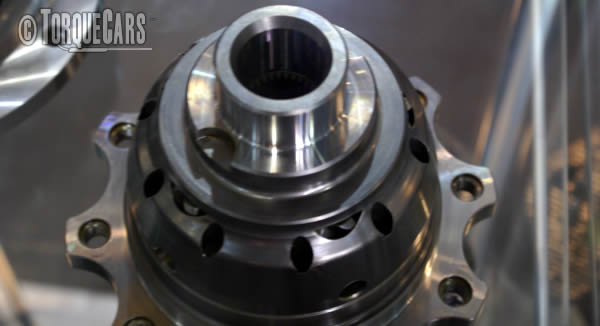
Torque actuated differentials (which use a clutch) and torsion differentials are two more prevalent differential types.
Does a difference make a significant difference? In a competitive situation, when you are pushing the limits of your power, this may make a significant difference in your lap times.
A car with 120bhp may achieve better timings than one with 170bhp. You'll notice that the car pulls better and is more predictable and stable in turns.
Additionally, modern diffs can alter the amount of power sent to the rear wheels, allowing for superior handling and traction.
EGR Removal from 2.0 TDi
Eliminating the EGR has no discernible effect on performance. It does not open at full throttle (WOT), which helps improve fuel consumption and throttle response at low RPMs and reduces the effort required of the engine to overcome the cylinder vacuum.
It may, however, make the engine tick over unevenly and has been blamed for carbon build-up in the 2.0TDi engine, but as long as you use a high-quality gasoline and cleaner (such as BG244), you should have no problems.
Power limits on the BKD 2.0 TDi Engine
- 250bhp is a reasonable upper limit for the majority of drivers seeking a daily vehicle.
The engines are fairly powerful, and you'll discover that a safe maximum power output for a regular block is roughly 350 horsepower; however, a lot relies on driving style and maintenance.
- Over 220bhp, power distribution and traction might be a challenge, therefore it's worth investing in a decent LSD and sports tyres.
- You will need to upgrade the injectors at roughly 250bhp, although this can vary depending on the injectors that came standard with your vehicle.
The majority of drivers say that the clutch starts to slide about 420-430Nm, and the DSG gearbox has a torque restriction so bear this in mind and upgrade before it becomes a problem.
Is a solid flywheel suitable for the 2.0 TDI?
Solid flywheels are not an excellent alternative for the 2.0TDi; it really need a DMF to smooth out the bumps.
Individuals who have installed lighter solid flywheels often regret their decision.
For more information on this, see our guide on DMF versus solid flywheel conversions.
Upgrading the 2.0 TDi's BKD intercooler
We suggest upgrading the intercooler; the standard one is rather tiny and suffers from heat absorption during extended periods of high rpm running. It is also (usually) sited behind the wheel well, and a FMIC is far more effective and will allow a larger size.
Turbochargers have challenges with the cold intake charge being close to the hot exhaust temperatures inside the turbo itself, and with air compression adding a significant amount of heat you have a lot of additional heat in the intake charge.
It is a widely believed belief that colder air contains more oxygen. So why is colder air advantageous? It carries more oxygen (it is more dense).
The more oxygen available, the more diesel can be burned, enhancing the power output of the 2.0 TDI BKD engine.
What is the purpose of an intercooler?
Intercoolers are radiators used to cool the intake air charge prior to it entering the 2.0 TDi engine. Utilize the cold air by installing an intercooler in front of the radiator.
The majority of heat is provided after the air intake filter and before to the turbocharger or supercharger.
Front mounted intercoolers are located in front of the radiator, providing superior air conditioning than top mounted intercoolers or those installed to one side, generally in a wheel well!
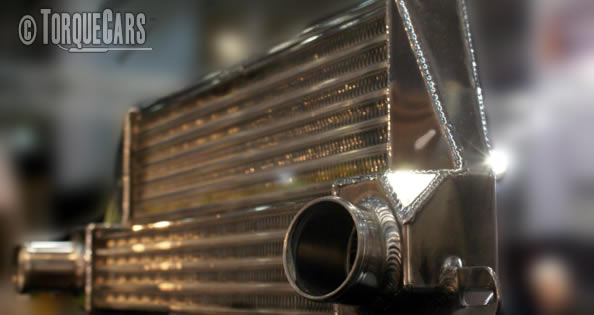
A well-designed intercooler may generate between 5% and 10% more power and can tolerate heat soak for an extended period of time! The advantages are greater if you've performed other changes, since the amount of heat it must deal with will be far greater.
All turbocharged engines, even diesels such as the 2.0TDi, benefit from an intercooler, and standard intercoolers may be upgraded by relocating or replacing them with those from the S or RS trim levels of the vehicle.
2.0 TDI BKD Problems
We've moved this to a new page to allow us to go into further depth regarding these concerns, since this page was becoming very lengthy. As a result, please read our post on 2.0TDI problems.
All contemporary engines have weak points; by highlighting them, we intend to educate the consumer and help them identify possible problems early on.
We are not attempting to imply that these engines are especially unreliable or troublesome - I just purchased one (a BKD) after doing extensive study and was really satisfied with it. It's worth noting that, in general, recent engines have had the flaws dealt with and many early ones have since been fixed.
- There are quite a few hints and allegations of a frequently malfunctioning fan controller that prevents the fan from shutting off, gradually depleting the battery and perhaps destroying the fan.VAG attempted to address these difficulties by replacing the chain with gears, which seems to be a viable option. Additionally, they increased the size of the hexagon to make it stronger, which it is; but, it is now deteriorating due to increased miles. This is still a highly contentious topic that must be addressed.
- Oil flow problems can size the oil pump! This is typically because poor quality oil has been used. When an engine fails, the oil pressure decreases instantly and the engine is rendered unrepairable. Often, a dash warning light may illuminate immediately after the engine seizes! Which is not really beneficial.
- On early EA188 units, the cylinder head cracked a lot. To the right of the cylinder head, behind the fuel lines, is a reference number 03G 103 351 B or 03G 103 308 B.Take a close look at the letter at the conclusion of this serial. If you have A, you are pretty certainly going to suffer a broken cylinder head.Although the B is somewhat stronger, a couple of them have fractured so is not a guarantee. C is the one to choose, since there are very few, if any, instances of cracked cylinder heads.
- The 2.0 engines have a bumpy idle, which you must normally accept. However, a defective DMF, injector failures, or EGR flow rate difficulties may potentially result in a very lumpy idle or misfire.
- The balancing shaft module is standard on the majority of longitudinal PD engines. These engines have two issues: a broken chain tensioner, which disables the balancing shaft module, including the oil pump. The second issue is with the module itself, specifically how it operates the oil pump; this is accomplished through a little hexagon that also breaks due to wear.
- Maintain a watchful check on engines with the A or B codes, especially if any problems or concerns occur.
PLEASE HELP US COMPLETE THIS PAGE. If we've missed any information or you have any recommendations to provide, please let us know in the comments area below.
To learn more about tuning your automobile, please join our friendly forum, where you may debate choices in more depth with our owners. Additionally, it is worthwhile to read our impartial VW, SEAT, Skoda Audi tuning articles to have a thorough understanding of the pros and cons of each adjustment.
Kindly assist us in improving these recommendations by providing feedback in the comments section below.
We're always interested in hearing about what our visitors are up to and which modifications work best for them on whatever kind of vehicle. We use your comments and feedback to enhance the accuracy of these constantly updated articles.
Please Check out my YouTube channel, we're regularly adding new content...
PLEASE HELP: I NEED YOUR DONATIONS TO COVER THE COSTS OF RUNNING THIS SITE AND KEEP IT RUNNING. I do not charge you to access this website and it saves most TorqueCars readers $100's each year - but we are NON PROFIT and not even covering our costs. To keep us running PLEASE Donate here
If you liked this page please share it with your friends, drop a link to it in your favourite forum or use the bookmarking options to save it to your social media profile.
Feedback - What do You Think?
Please use our forums if you wish to ask a tuning question, and please note we do not sell parts or services, we are just an online magazine.
Help us improve, leave a suggestion or tip
Please watch this video and subscribe to my YouTube channel.
2 Responses to “2.0 TDI BKD Mods”

 Click to accept YouTube Cookies & Play.
Click to accept YouTube Cookies & Play.
Great article! thanks
“There are quite a few hints and allegations of a frequently malfunctioning fan controller that prevents the fan from shutting off, gradually depleting the battery and perhaps destroying the fan.VAG attempted to address these difficulties by replacing the chain with gears, which seems to be a viable option. Additionally, they increased the size of the hexagon to make it stronger, which it is; but, it is now deteriorating due to increased miles. This is still a highly contentious topic that must be addressed.
What is that?!
The Chain / Hex Key have nothing to do with any Fan Controller.
This 16V PD-TDI engine is equipped with balancer shaft module, which could be driven two ways: By a chain, or by a set of gears. Connected to the Balancer shaft module is also the oil pump.
Both is, by the way, inside the oil pan. So far away from any fan.
The Modules driven by gear, and then driving the oil pump with a hex key are most often. There are two versions with that: One with a short hex key (up 2008 I guess) and one with longer hex key (after 2008). The Hex Key should replaced (best about 250.000km). If the key is still the short one, then the balancer shafts could be replaced by the improved ones with the longer Key hole (See Listings on Ebay).
If the hex key fails, the engine should instantly switched off. It can then mostly be saved by replacing the Crankshaft Bearings, the Turbo, and the Balancer Module with oil pump. If that solution is not available, it is possible to delete the balancer shaft module and use an oil pump from 1.9 TDI of same generation (for example engine code BLS). Some slight modification have to be made in that case.
Best regards